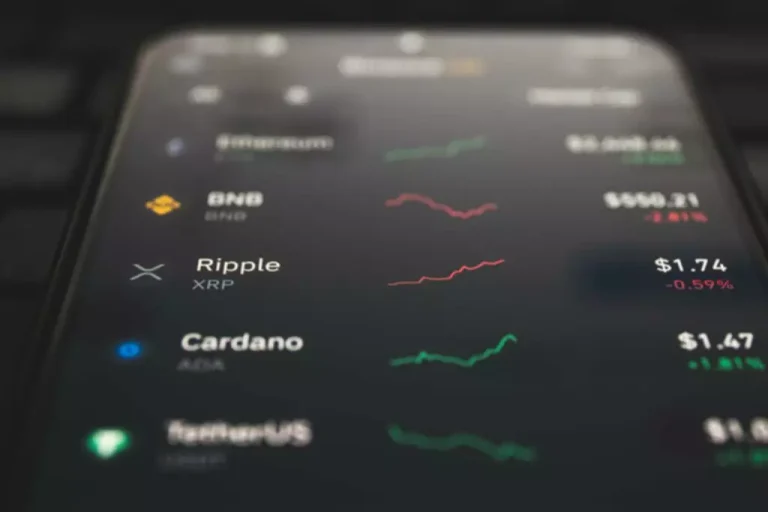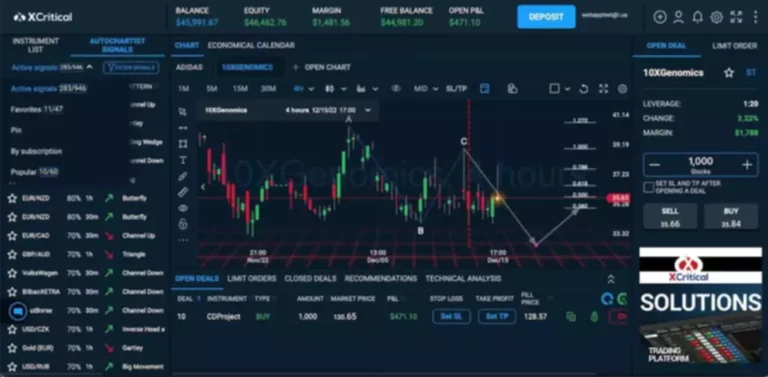However, there are instances the place expert energetic managers can constantly beat the market. When the spread between lively funds and passive funds is consistently narrowing. Remember, energetic funds tackle unsystematic danger in the market which passive funds don’t. That means for investing in an energetic fund you better be compensated with relatively larger returns.
- However, if an investor doesn’t need the fund supervisor to take too many selections, wants the fund to easily map the benchmark, and doesn’t need to take a risk, then passively managed funds could be considered.
- When it involves investing in mutual funds, individuals get confused as to whether or not they invest in an lively or a passive fund.
- In different words, a fund manager has lots to do with an equity fund’s performance.
- While hedging can provide an final degree of protection in lively investing, it’s necessary to notice that it comes with its own costs and complexities.
- In contrast, passive funds’ returns intently track the benchmark index, providing traders with market-like returns.
Passive funds, however, are cost-efficient and tend to have lower expense ratios. Secondly, there could be little or no room for alpha in index funds.By investing in an index fund, the investor is accepting returns that are consistent with the index the fund is monitoring. How a lot greater than common is a matter of judgement and you must take the view based mostly on the projected earnings growth. If the valuations are properly above the historically average P/E and there might be limited earnings visibility, then once more it’s a case for passive investing over active investing. The views said on this article is to not be construed as investment recommendation and readers are advised to seek impartial financial advice before making any investment choices. For more particulars on danger elements, terms and conditions please learn sales brochure & policy document (available on ) rigorously before concluding a sale.
Best Investment Options In India
Actively managed portfolios usually embody shares of varied companies that pay common dividends. When buyers put money in such stocks, these dividends are supplied to them as a steady stream of income. In order to not deviate from the benchmark index and maintain a low tracking error, passively managed funds may be compelled to purchase securities that are overvalued and sell securities which are undervalued. This can outcome in trading choices that gained’t maximise returns even when there is the potential to do so. You can buy and promote these funds by way of online platforms, brokers, or fund homes.
Remember, when you shift to passive investing like within the case of index funds you save massive time on charges over a period of time. It is estimated by Bloomberg that Vanguard, which is a pioneer in index funds, has saved close to $1 trillion for buyers purely by way of lower charges. That explains why the two biggest fund homes in the world right now (Blackrock and Vanguard) are passive funds. To obtain the goal, the fund supervisor may select some stocks which have a higher risk element.
However, reaching this aim is not assured, and active funds can typically underperform the market. In distinction, passive funds’ returns closely track the benchmark index, offering investors with market-like returns. While they could not generate important alpha, passive funds offer constant returns that mirror the index performance. The performance consistency of passive funds vs energetic funds has been a topic of dialogue amongst financial experts for years. This article delves into the nuances of lively vs passive investing, highlighting their core rules and differentiating factors. By understanding passive investing vs active investing, you can make knowledgeable selections on which investment path aligns along with your monetary objectives, threat tolerance, and private preferences.
Merchandise Portfolio
The fund administration team conducts in-depth analysis and evaluation to determine out the way to beat the market or the fund’s benchmark index to deliver higher returns to buyers. Passive investing is cheaper than lively investing because passive funds have lower expense ratios and transaction costs than active funds. This is because passive funds do not require lively shopping for and promoting of securities or intensive analysis and evaluation. Active funds are managed by portfolio managers who aim to outperform the market by choosing individual shares and timing their trades. They use varied strategies to determine undervalued companies or those with strong development potential.

Appreciate will quickly be offering a variety of exciting new products, including mutual funds, MSME loans, Indian equities, personal loans, unique property, insurance coverage, and IPOs. A passively managed portfolio is a collection of securities which may be designed to duplicate the efficiency of a benchmark index, such as the Nifty 50 or the Sensex. The portfolio does not involve any active choice making by a fund supervisor, but quite follows a algorithm or a method to match the composition and weightage of the index. Some active fund managers have been capable of consistently beat the market over the lengthy run.
Management Fashion
Instead of selecting specific investments, passive buyers use funds that copy the overall market, like index funds or ETFs. The most definitive examine on passive versus active funds in India since 2013 is SPIVA India Scorecard. According to its latest report, 2 out of three large-cap funds did not beat S&P BSE a hundred returns over a 10-year period. This essentially means that an investor is best off investing in a low-cost passive fund instead of attempting to beat its return by investing in large-cap funds.

This implies that passive funds generally have decrease management charges as they don’t require the identical degree of experience as energetic funds. Before investing into active and passive funds, consider crucial components https://www.xcritical.in/ to align your investments along with your financial objectives. First and foremost, consider your monetary objectives and funding horizon, making certain they align with the fund’s objective.
Passive investing is usually thought of safer because of its long-term, low-risk strategy. It is advisable to conduct thorough research before making any investment selections. This calculation and results displayed are based mostly on information supplied and sure assumptions in regards to the rates of return. It is not meant to be and should not alone be taken as the basis for an investment determination. The returns do not indicate the higher or decrease limits of the return that you would be get together with your policy and the value is dependent on numerous components including future performance. Bajaj Allianz Life Insurance Company Limited shall not be in any means responsible for any loss or harm which will arise to any particular person from any inadvertent error within the information reported by the calculator.
During instances of volatility, the fund supervisor can resolve to cut back exposure to specific belongings. They can even make strategic and timely decisions to move away from underperforming assets and make sure that the capital of the traders is optimally utilised always. Most ETFs are passive investments, as they track a particular index, sector, or asset class. They are designed to mirror the performance of the underlying benchmark, offering traders a cost-effective and clear method to entry market returns. However, there are some actively managed ETFs in the market, however they’re much less frequent.
However, some energetic funds persistently outperform the market, which is why thorough analysis and due diligence are important earlier than investing. Passively managed funds charge a decrease fee to traders than actively managed funds, as they don’t require any active intervention by a fund supervisor or incur high transaction prices. This fee can also be known as the management fees and is included in the expense ratio which is expressed as a share of the fund’s AUM. The expense ratio of passively managed funds is usually lower than that of actively managed funds.
Execs And Cons: Lively Vs Passive Investing
Both approaches have their deserves, and a well-balanced investment technique might embody a combination of energetic and passive funds for optimum diversification. Active buyers seek to outperform the market by regularly buying and promoting assets. In distinction, passive traders mirror market efficiency, holding a diversified portfolio for long-term stability and looking for steady progress over time. The returns you may obtain in your investment may rely upon the type of technique chosen by the fund manager, among different elements. Hence, having a transparent understanding of each kind of investment – both energetic and passive investing – could also be essential to choosing the right market-linked insurance coverage plan and assembly your monetary objectives efficiently. In the controversy of energetic vs. passive fund efficiency, passively managed funds purpose to solely replicate (not to beat) the performance of a specific market index.

Balancing one’s portfolio with a mix of energetic and passive investment choices can provide a diversified strategy to wealth creation and risk management. Knowing the differences between energetic investing vs passive investing could assist you to in making the best additions to your investment portfolio. Hence, guarantee to make use of the knowledge presented right here appropriately to satisfy your objectives and secure your financial future. Maybe as a outcome of human beings undergo from over-optimism bias, i.e., the tendency to magnify their own abilities, as we suffer from the phantasm of management or information. In a 2006 research carried out by James Montier with 300 fund managers across the globe, practically 74% of respondents thought themselves above average at their jobs. This is statistically unimaginable and reveals our inherent bias of superior expertise when pitted against others.

One may have a glance at the past performance of a fund to get a better idea; however, it is most likely not indicative of future yields, so one ought to ideally proceed with care.
But if investment zigs, analysts turn out to be incorrect, which might result in catastrophic losses. Various knowledge point out that only a minimal number of actively managed portfolios outperform their benchmarks. In fact, over average to prolonged durations, solely a restricted variety of actively managed funds achieved to exceed the performance of their benchmark index. Since these buyers choose the proper securities and cautiously observe market entries and exits, they’re highly skilled within the decision-making process.

Recent Comments